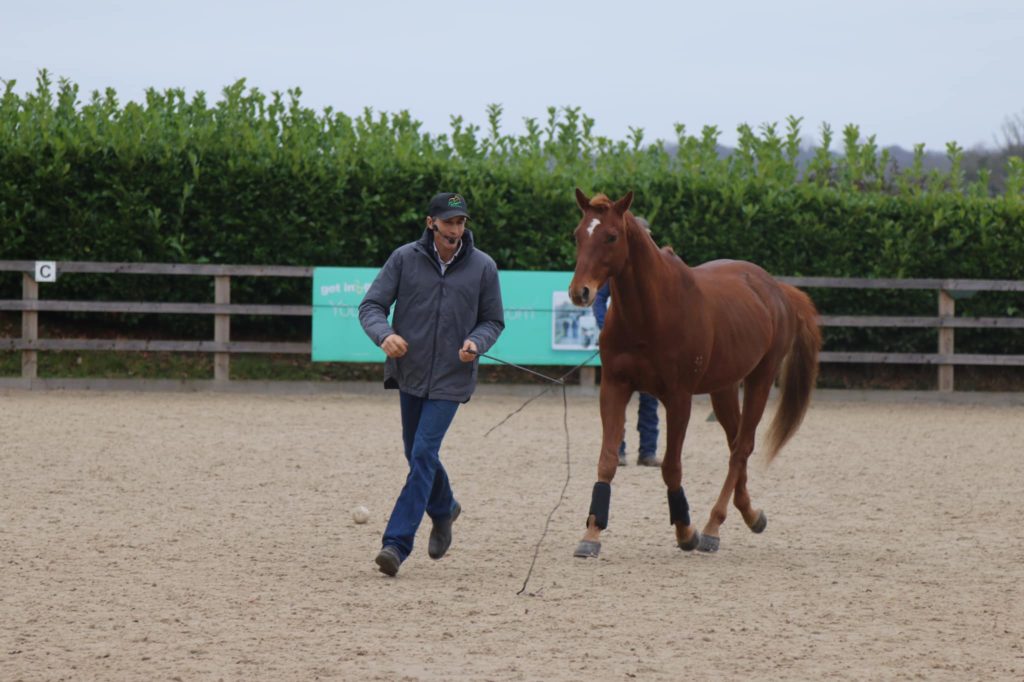Understand Your Horse
Working with young and tricky horses on a daily basis has led me to gain an in depth understanding of horses natural instincts. If I hadn’t, I would have ended up with a lot more injuries than I have had over the years! Even with the most experienced or quiet horse, you need to keep focused and “in tune” with them if you want to develop the best relationship with your horse.
The aim of this blog isn’t to talk about each of your horse’s natural instincts. Instead, it’s to give you some ideas to make your training easier. However, if you want to know more, my Pre Training Knowledge e-book is a great place to start. It is where I advise all Your Horsemanship members to start their journey from.
Know when to use your horse’s instincts to your advantage
Here’s a question. You are starting a big, young horse under saddle and you want to give her first canter under saddle. How do you encourage her to pop into a few strides of canter? Check out this video from a Christmas Coffee Morning to see if you came up with the same ideas as me!
I had noticed that this mare was more forward going towards the gate. I decided that by encouraging her to canter towards the gate, where she wanted to go, she was more likely to tip into a canter.
My next question is, if I only cantered her towards the gate over the next week, what might happen? Hopefully you might think that it is likely that I would create a napping issue. She might begin to nap towards the gate and be reluctant to move away from the gate.
And here lies the fine line between your horse’s instincts working for you and them working against you. I decided that the advantages of asking for a canter towards the gate with this mare at that moment outweighed the possibility of creating a future napping problem.
Examples of using your horse’s instincts
There are obvious ways of using your horse’s instincts. For example, using feed to encourage a horse onto a horsebox, or their “field mate” as a lead through water. In terms of training methods, these lean towards “positive reinforcement” or “clicker training”, where you give a horse a reward when they perform a desired movement.
However, I would encourage you to consider more subtle uses on a daily basis to gain a more respectful and trusting relationship with your horse. For example, if your horse is concerned about negotiating an “obstacle” such as water or a tarpaulin, allow your horse to sniff, paw and bite at it. This is your horse’s way of testing the obstacle and deciding whether it is safe to go over or through.
Understanding your horse’s sense of smell can also help with your training. Horses that don’t load or settle on a box, or become very anxious in stables at events can become calmer if you put their own dirty bedding in the box or stable. The familiar smell can reassure your horse. The same works for horses that have a fear of vets or farriers. Understandably, vets need to keep scrupulously clean, and will usually have a “disinfectant” smell on their hands and clothing. Sensitive horses may take an aversion to the smell, or some may form an association with the smell and injections for example. The same goes for the smell of farriers and an association with the act of shoeing.
When your horse’s instincts work against you
Horse’s are primarily flight animals, although they will also fight if put in certain situations. It takes calm, consistent and decisive training to “override” these flight instincts. Even then, sensitive horses can remain flighty, and even the most solid horse will have the odd spook. It is important that you know how to manage these reactions, on the ground and when riding. If they are managed calmly and consistently, you will remain safe and your horse will increase their trust in you. In time, these occasions will lessen. There are some great ways to manage your horse’s natural instincts within the Foundation Courses of Your Horsemanship. Do check out all the lessons within the Courses section of the website.

Hi
I was looking at your foundation courses after reading your blog. It mentions dealing with spooking, would it be possible to know which course this would be covered on plesde?
Hello Karina, membership gives you access to all the courses and there are relevant lessons within all of them, but the most relevant section is found in the Problem Solving Library.